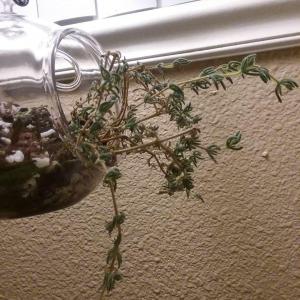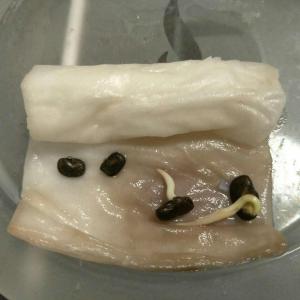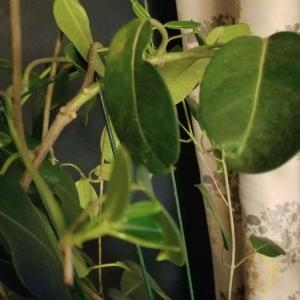文章
Miss Chen
2018年03月06日

There are several reasons for growing a bean plant in a cup. This method is commonly used to demonstrate the growing process in classroom settings because the plants germinate and sprout quickly, while requiring very little care. Some gardeners use this method as a way to begin growing plants before outdoor growing conditions are favorable. Whatever the reason, there are a few guidelines to follow in order to produce a healthy bean plant.

Step 1
Obtain seeds for the type of bean plant you would like to grow from a local seed supplier. Dried beans from a grocery store can also be used, although these may not germinate properly because they have been processed to be eaten, rather than to be grown.
Step 2
Fill an 8-oz. Styrofoam cup to the top with soil. Make sure not to pack the soil down into the cup.
Step 3
Create a hole in the soil at the center of the cup by pressing one finger into the soil to a depth of 1 inch.

Step 4
Place the bean in the bottom of the hole. Fill in the hole with soil and lightly compress the soil so that it is no longer loose. Do not compress the soil too much, or the roots and other growing parts will be hindered as they try to grow through the soil.
Step 5
Water the seed gently by sprinkling enough water on the soil to moisten it. Beans grow best in soil that is moist, rather than wet.
Step 6
Place the cup in a location that will receive sunlight for at least six to eight hours a day and water as needed for the soil to stay moist.

Step 1
Obtain seeds for the type of bean plant you would like to grow from a local seed supplier. Dried beans from a grocery store can also be used, although these may not germinate properly because they have been processed to be eaten, rather than to be grown.
Step 2
Fill an 8-oz. Styrofoam cup to the top with soil. Make sure not to pack the soil down into the cup.
Step 3
Create a hole in the soil at the center of the cup by pressing one finger into the soil to a depth of 1 inch.

Step 4
Place the bean in the bottom of the hole. Fill in the hole with soil and lightly compress the soil so that it is no longer loose. Do not compress the soil too much, or the roots and other growing parts will be hindered as they try to grow through the soil.
Step 5
Water the seed gently by sprinkling enough water on the soil to moisten it. Beans grow best in soil that is moist, rather than wet.
Step 6
Place the cup in a location that will receive sunlight for at least six to eight hours a day and water as needed for the soil to stay moist.
0
0
成长记
cclecombe
2018年03月03日

Since I’ve mived her to a sunnier spot, she’s got her colour back! She seems to be growing new leaves well too!


1
0
文章
Miss Chen
2018年02月25日

Description: This biennial plant consists of a low-growing rosette of basal leaves up to 7" across during the 1st year. These basal leaves are up to 3½" long and ¾" across; they are green to greyish green, oblanceolate, dentate, and often slightly pinnatifid with shallow lobes. Their upper surface is often hairy, although they tend to become less hairy with age. During the 2nd year, Tower Mustard bolts during the spring and produces one or more flowering stalks up to 3½' tall. These stalks are light green to dull white, unbranched, hairless, and glaucous. Sometimes there may be a few hairs near the base of the stalks. The alternate cauline leaves are up to 3" long and 1" across. They are greyish green, lanceolate, smooth along the margins, hairless, and glaucous. Some of the lower cauline leaves may be dentate and slightly pinnatifid. The base of each cauline leaf clasps the stalk with a pair of basal lobes, which may be rounded or pointed. During cool spring weather, the cauline leaves may turn purple when they are exposed to full sun. Each stalk terminates in an elongated raceme of flowers and upright siliques (slender cylindrical seedpods). This raceme can become as long as the rest of the plant (up to 1¾' in length) and it has a tower-like appearance. Each flower at the apex of the raceme is up to 1/6" (4 mm.) across, consisting of 4 white or cream petals, 4 light green or yellow sepals, a stout style, and several stamens. The pedicels of the flowers and siliques are about ¼–½" in length.
The blooming period occurs during late spring to mid-summer and lasts about 1½ months. Each flower is replaced by a slender cylindrical silique up to 2½" long. The siliques are held upright close to stalk of the raceme. Each silique contains 1 or 2 rows of slightly flattened ovoid seeds. These small seeds have narrowly winged margins and they are dispersed to some extent by the wind. The root system consists of a stout taproot. This plant spreads by reseeding itself.
Cultivation: The preference is full sun to light shade, mesic to dry conditions, and loam, clay-loam, or rocky soil. This plant also tolerates soil containing sand or hardpan clay. It is fairly easy to grow from seed.
Range & Habitat: The native Tower Mustard occurs occasionally in the northern half of Illinois, but it is uncommon in the southern half of the state (see Distribution Map). Habitats include various kinds of prairies (sand, gravel, black soil, or clay), rocky open woodlands, barren savannas, limestone glades, rocky bluffs, and abandoned fields. In Illinois, Tower Mustard has low fidelity to any particular habitat. It also occurs in Eurasia.

Faunal Associations: Mostly small bees and flower flies visit the flowers for nectar or pollen. Occasionally various species of White butterflies (Pieridae) visit the flowers for nectar. The caterpillars of two Pierid butterflies, Anthocharis midea (Falcate Orangetip) and Euchloe olympia (Olympia Marble), prefer Arabis spp. (Rock Cresses) as a food source, particularly those Rock Cresses that are typically found in sunny habitats. The caterpillars of another Pierid butterfly, Pieris napi (Mustard White), reportedly feed on Rock Cresses, although this butterfly species hasn't been observed in Illinois since the 19th century. Little information appears to be available about the desirability of Tower Mustard as a food source for mammalian herbivores. However, the foliage is not particularly bitter nor peppery.
Photographic Location: The webmaster's wildflower garden in Urbana, Illinois.

Comments: Among the various Rock Cresses (Arabis spp. and related genera), Tower Mustard is mostly likely to be found in black soil prairies, although it also occurs in other kinds of habitats. The tower-like inflorescence gives this plant an odd appearance that is rather striking, especially when it becomes 3-4' tall. Because Tower Mustard is not difficult to grow and seems rather robust, it is rather surprising that this species is not more common. There are several Rock Cresses in Illinois, which can be found in either sunny or shady habitats, depending on the species. Some species have erect siliques that are appressed against the stalk of the raceme, while other species have siliques that are spreading or drooping. Tower Mustard belongs to the first group. Its appearance is similar to a very rare species, Arabis drummondii (Drummond's Rock Cress). This latter species has flattened siliques containing 2 rows of seeds and the style of its flowers is more slender than the style of Tower Mustard. Another species, Arabis hirsuta (Hairy Rock Cress), has hairs along at least the lower half of its flowering stalks, and it has flattened siliques containing a single row of seeds. The siliques of Tower Mustard are terete (round in cross-section). A scientific synonym of this plant is Arabis glabra.
The blooming period occurs during late spring to mid-summer and lasts about 1½ months. Each flower is replaced by a slender cylindrical silique up to 2½" long. The siliques are held upright close to stalk of the raceme. Each silique contains 1 or 2 rows of slightly flattened ovoid seeds. These small seeds have narrowly winged margins and they are dispersed to some extent by the wind. The root system consists of a stout taproot. This plant spreads by reseeding itself.
Cultivation: The preference is full sun to light shade, mesic to dry conditions, and loam, clay-loam, or rocky soil. This plant also tolerates soil containing sand or hardpan clay. It is fairly easy to grow from seed.
Range & Habitat: The native Tower Mustard occurs occasionally in the northern half of Illinois, but it is uncommon in the southern half of the state (see Distribution Map). Habitats include various kinds of prairies (sand, gravel, black soil, or clay), rocky open woodlands, barren savannas, limestone glades, rocky bluffs, and abandoned fields. In Illinois, Tower Mustard has low fidelity to any particular habitat. It also occurs in Eurasia.

Faunal Associations: Mostly small bees and flower flies visit the flowers for nectar or pollen. Occasionally various species of White butterflies (Pieridae) visit the flowers for nectar. The caterpillars of two Pierid butterflies, Anthocharis midea (Falcate Orangetip) and Euchloe olympia (Olympia Marble), prefer Arabis spp. (Rock Cresses) as a food source, particularly those Rock Cresses that are typically found in sunny habitats. The caterpillars of another Pierid butterfly, Pieris napi (Mustard White), reportedly feed on Rock Cresses, although this butterfly species hasn't been observed in Illinois since the 19th century. Little information appears to be available about the desirability of Tower Mustard as a food source for mammalian herbivores. However, the foliage is not particularly bitter nor peppery.
Photographic Location: The webmaster's wildflower garden in Urbana, Illinois.

Comments: Among the various Rock Cresses (Arabis spp. and related genera), Tower Mustard is mostly likely to be found in black soil prairies, although it also occurs in other kinds of habitats. The tower-like inflorescence gives this plant an odd appearance that is rather striking, especially when it becomes 3-4' tall. Because Tower Mustard is not difficult to grow and seems rather robust, it is rather surprising that this species is not more common. There are several Rock Cresses in Illinois, which can be found in either sunny or shady habitats, depending on the species. Some species have erect siliques that are appressed against the stalk of the raceme, while other species have siliques that are spreading or drooping. Tower Mustard belongs to the first group. Its appearance is similar to a very rare species, Arabis drummondii (Drummond's Rock Cress). This latter species has flattened siliques containing 2 rows of seeds and the style of its flowers is more slender than the style of Tower Mustard. Another species, Arabis hirsuta (Hairy Rock Cress), has hairs along at least the lower half of its flowering stalks, and it has flattened siliques containing a single row of seeds. The siliques of Tower Mustard are terete (round in cross-section). A scientific synonym of this plant is Arabis glabra.
0
0
求助
Jessica Vaughn
2018年02月22日

please help! this drosanthemum floribundum is dying and I can't find anything online on how to help it. I don't iverwater it and it's drought proof! Please help it's got green growing ends but the rest is dry and hard!


0
0
Aki
2018年01月12日

Got this Anchan or butterfly pea flower seeds from my nephew, the progress of growing from seed on 10 Jan - 12 Jan




0
0
文章
Miss Chen
2018年01月07日

Perennial gardeners who master bulb division and growing lilies from seed may want to try another form of vegetative propagation, stem cuttings. Although this method of propagation is more difficult for herbaceous perennials such as true lilies that grow from bulbs than it is for woody perennials, stem cuttings guarantee an identical clone of the parent plants. Some types of lilies lend themselves more readily to the technique.

How Lilies Reproduce
Lilies grow from scaled bulbs that carry the genetic code of the plant and the embryo and food and moisture to keep it safe until conditions allow it to grow again. Bulbs multiply rapidly. Some varieties produce additional bloom-ready bulbs every year. Some bulbs grow little bulblets around the base, or growth plate, of the parent bulbs and the section of the stem between the bulb and soil line. Some lilies, notably the North American native tiger lily, grow tiny bulbils at the junction of the leaf and stem. Each scale of the lily's bulb, every bulblet and bulbil carry the exact chromosomal combination of the parent. Seeds, produced in pods formed on flower stems, carry the combined genetic code for a new plant -- a hybrid -- with the combined chromosomal structure of the seed-bearing parent and whatever lily provided pollen. Success with stem cuttings relies on how the cultivar self-reproduces and how the stem cutting is planted.
Timing
Lily stems begin dying back quickly after flowers fade, so cuttings must be taken soon after the last flowers drop. Cuttings must be planted immediately in sharp sand or a starting mix and kept moist. When a shoot emerges, a bulbil has formed in the axil where the leaf meets the stem. This tiny bulb, planted in a nursery plot in spring, should grow large enough to move to the garden within a year or two. If the stem cutting successfully creates a bulbil, it may grow large enough to produce flowers within two to four seasons, depending on the lily cultivar.
Method
Section green, live sections of the stem, keeping at least one leaf on each section. Dust the section with a fungicide or rooting hormone, available at garden centers, and plant sections in a flat of sharp sand or soilless starter mix so that the leaves stand up above each section. Be sure to bury the axil of each leaf. That is where the bulbil will form.

Choosing Lilies for Cuttings
Many species of lilies, such as tiger lilies, readily form bulbils in leaf axils; hybrid Asiatics form bulblets on stems underground and leaves torn off with a section of stem. Lilies will not grow directly from stem cuttings; they must first form bulbils, so be patient. Only the lilies that grow bulbils -- or those hybrids whose ancestors grew bulbils -- will respond to this method of vegetative reproduction. The rest provide plenty of bulblets for the picking and planting on their mother bulbs' growth plates or along the underground sections of their stems.

How Lilies Reproduce
Lilies grow from scaled bulbs that carry the genetic code of the plant and the embryo and food and moisture to keep it safe until conditions allow it to grow again. Bulbs multiply rapidly. Some varieties produce additional bloom-ready bulbs every year. Some bulbs grow little bulblets around the base, or growth plate, of the parent bulbs and the section of the stem between the bulb and soil line. Some lilies, notably the North American native tiger lily, grow tiny bulbils at the junction of the leaf and stem. Each scale of the lily's bulb, every bulblet and bulbil carry the exact chromosomal combination of the parent. Seeds, produced in pods formed on flower stems, carry the combined genetic code for a new plant -- a hybrid -- with the combined chromosomal structure of the seed-bearing parent and whatever lily provided pollen. Success with stem cuttings relies on how the cultivar self-reproduces and how the stem cutting is planted.
Timing
Lily stems begin dying back quickly after flowers fade, so cuttings must be taken soon after the last flowers drop. Cuttings must be planted immediately in sharp sand or a starting mix and kept moist. When a shoot emerges, a bulbil has formed in the axil where the leaf meets the stem. This tiny bulb, planted in a nursery plot in spring, should grow large enough to move to the garden within a year or two. If the stem cutting successfully creates a bulbil, it may grow large enough to produce flowers within two to four seasons, depending on the lily cultivar.
Method
Section green, live sections of the stem, keeping at least one leaf on each section. Dust the section with a fungicide or rooting hormone, available at garden centers, and plant sections in a flat of sharp sand or soilless starter mix so that the leaves stand up above each section. Be sure to bury the axil of each leaf. That is where the bulbil will form.

Choosing Lilies for Cuttings
Many species of lilies, such as tiger lilies, readily form bulbils in leaf axils; hybrid Asiatics form bulblets on stems underground and leaves torn off with a section of stem. Lilies will not grow directly from stem cuttings; they must first form bulbils, so be patient. Only the lilies that grow bulbils -- or those hybrids whose ancestors grew bulbils -- will respond to this method of vegetative reproduction. The rest provide plenty of bulblets for the picking and planting on their mother bulbs' growth plates or along the underground sections of their stems.
0
0



























